Has diversity finally become fashionable at Australian Fashion Week?
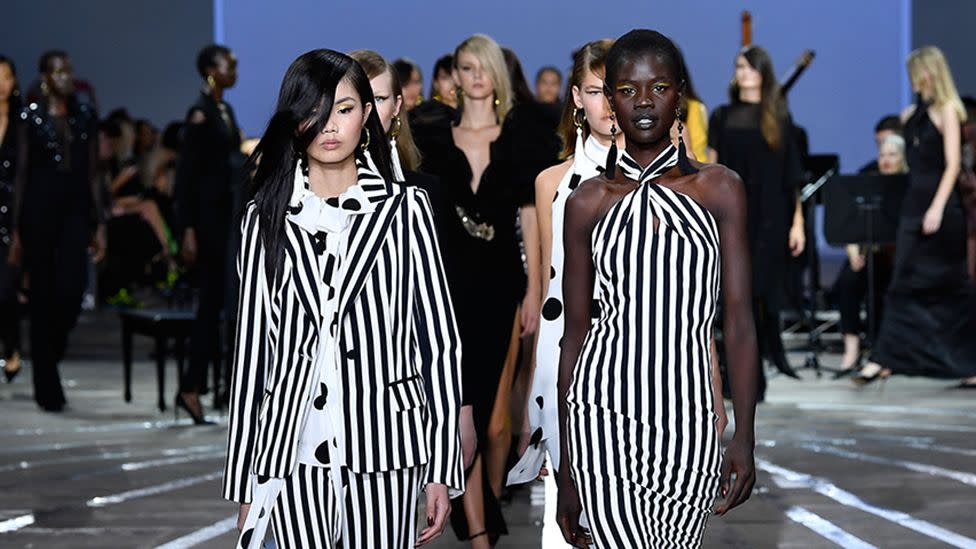
Racial diversity on the runway at the annual Mercedes Benz Fashion Week Australia (MBFWA) has been a slow burn, but this year’s closing Carla Zampatti show has promised Australia’s trying harder to catch up with the rest of the world.
At least nine of the 20 models who hit the final catwalk were women of colour, a casting move that’s been consciously implemented to greater reflect the country’s multicultural population.
IMG Models Australia’s Vice President Managing Director, Danielle Ragenard, says “we are seeing catwalks that more generally reflect the racially diverse mix of cultures that you would see on the streets here in Sydney”.
“We at IMG started discussions around inclusivity for our Fashion Week pack in January to make sure we were offering designers a racially diverse mix of talent as well as more options in size,” she tells Yahoo Lifestyle Australia.
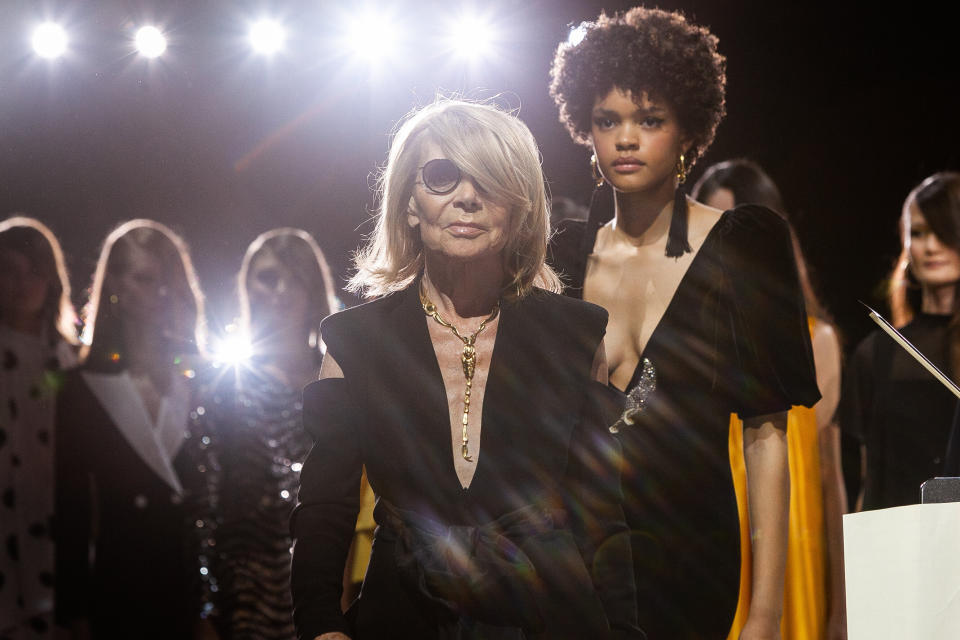
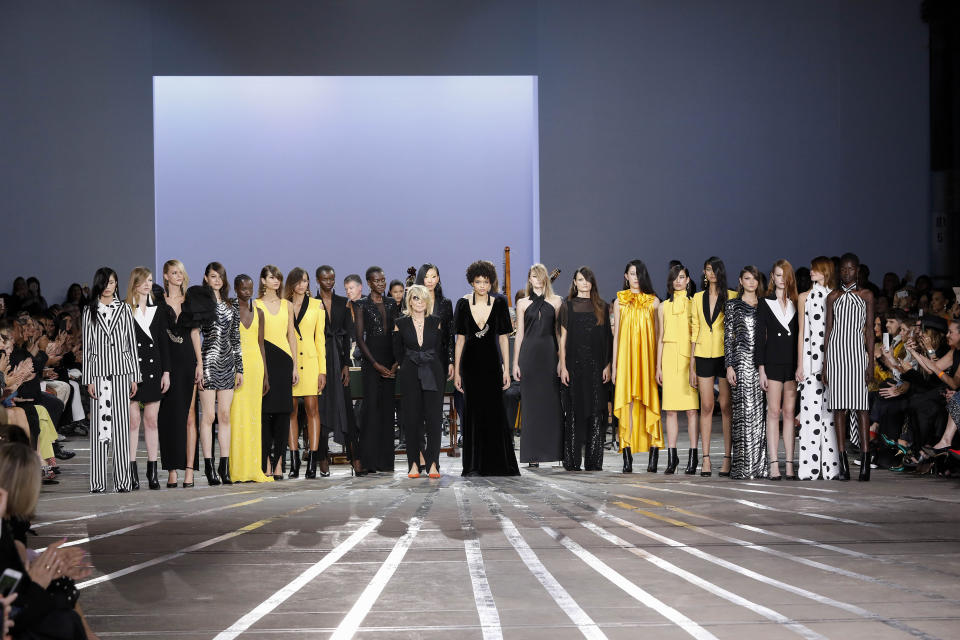
“We have been pushing this conversation globally for many years and I do feel this year we are seeing catwalks that more generally reflect the racially diverse mix of cultures that you would see on the streets here in Sydney.
“It has been a slow build to get to this point but I do see clients in general becoming much more aware.”
IMG’s clients in this case are of course the stable of fashion designers.
Edwina Forest, co-founder of label Aje, says there’s a “huge responsibility” to get the casting right, especially as the opening night show.
“The first thing is to find models that represent the faces of contemporary Australia,” the designer tells us.
“The faces of models in campaigns are splashed all over the world, so I do think as fashion designers and fashion brands we have a huge responsibility to ensure that we are promoting the right concepts and diversity should always have been one of them.
“It’s so bad that it hasn’t been up until just recently. It actually seems ridiculous that it’s made an element of currency [only] now.”
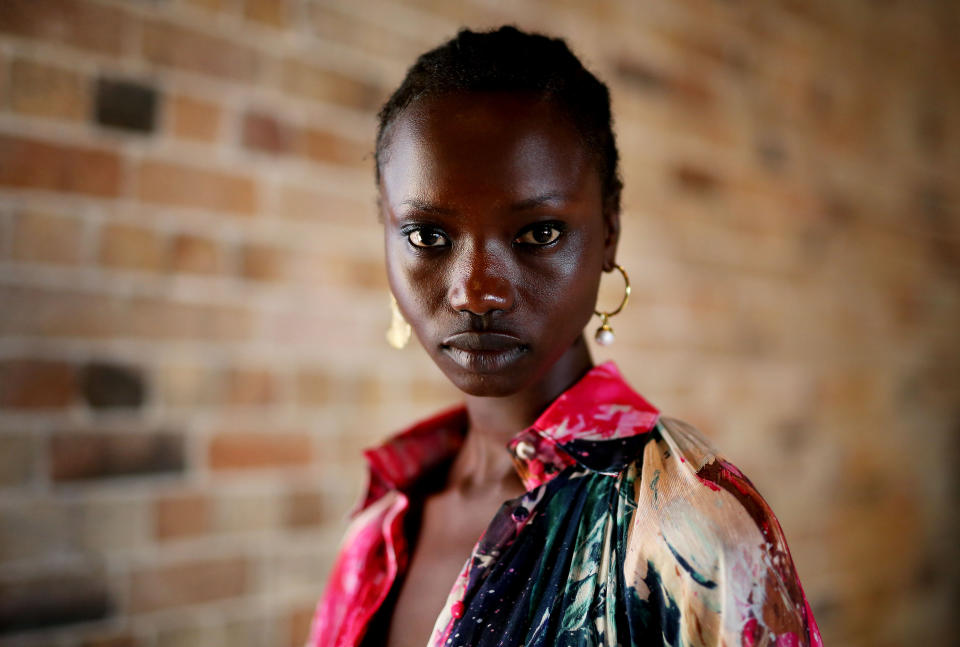
Kenyan-Australian model Agi Akur walked at Aje’s MBFWA opening show after entering the modelling industry a year ago.
“It wasn't easy, it took a while to even get my foot into the industry,” says the former refugee.
“Through time the industry has become more diverse and embracing of cultural diversity but we still have some time as a society until it becomes standardised.”
Having looked up to South Sudanese-British model Alek Wek who has forged a successful modelling career abroad, Agi tells us it’s so important for ethnically diverse young Australians to see themselves represented on the runway.
“Being able to see someone who looks like you on TV, magazines or any form of media can really boost one’s cultural and societal affirmation,” she tells Yahoo Lifestyle Australia.
“Including me with all the other culturally diverse models that have the honour to walk in fashion week is a beautiful sight.”
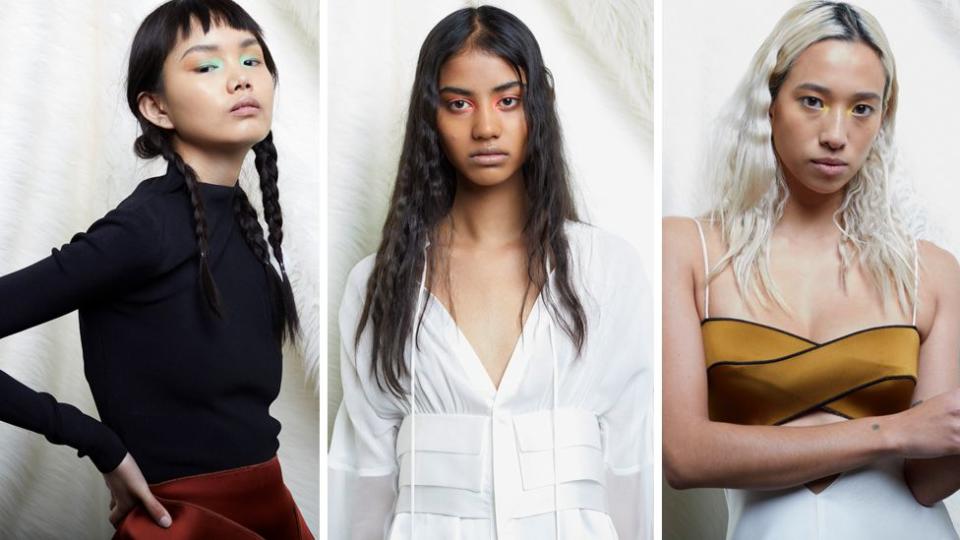
Sixteen-year-old model Alice Yang walked at her first Australian Fashion Week this year, and like Agi, chose to do modelling because representation matters.
“I still believe there is room for improvement, which is a main reason why I decided to model; to embrace my [Chinese] culture and advocate diversity,” she explains.
Yet while it’s promising to see some women of colour on the runway – there were five at the Alice McCall show and eight at Bec & Bridge – it’s still an uphill battle for many culturally diverse Australian models to land their big break.
Mahalia Handley, co-founder of social media movement Shine 4 Diversity, says the lack of diversity is even more apparent in fashion advertising campaigns.
“Shine started because someone said to me that they didn’t think race was a thing anymore and it had already found its equality in fashion. I was like, ‘No’,” explains the model of Maori and Irish heritage.
She says there’s also this concept of including racially diverse models for “tokenistic value”.

“There’s definitely been times where it’s like, ‘Oh, you’re here to tick a box. You’re here because we need to make it look like we’re doing something for diversity but we don’t really care about it.
“You’ll be the person who’s swaying in the background. You’ll also be someone who’s rarely in the shot. We just made sure you were there somewhere,” she explains.
“The weirdest thing I’ve ever got was people would tell me I’m really exotic for their brand. They’d say, ‘You’re a bit too exotic looking’. For me, I’m like, ‘I grew up in Darwin, my dad is from New Zealand which is three hours away, my mum is Irish. What makes me exotic?’”
Fellow model and Shine 4 Diversity co-founder Shareefa J agrees, explaining it’s often only the models with a “westernised aesthetic” who land the job.
“The majority of brands in Australia rarely use a person of colour and when they are included it will often be in a stereotypical or tokenistic way; for example a dark skinned black person will be the sports player or rapper in a TV commercial rather than a doctor or an office worker,” she says.
“In our experience, often the models of colour who are used have a slightly more westernised aesthetic compared to what would be considered the average for that ethnicity, for example a black African model with a straight hair wig.”

IMG’s Ragenard agrees that runways are “definitely” more progressive in terms of racial diversity compared to advertising campaigns.
“I think this follows on from international markets. Advertising clients in Australia are generally slower to embrace but many also are open,” she says.
“It is a constant conversation and education – if it doesn’t happen this season you have started the conversation for future bookings and we build on that every time we interact. Sometimes it’s just about that one talent that is special enough to break the mould.”
For Mahalia and Shareefa, launching Shine 4 Diversity was not just about promoting racial diversity, but body diversity as well.
“To be a plus-size model in Australia only really kind of broke through I’d say five or six years ago,” says Mahalia.
“This year was the first time there were plus-size models on the runway, but to be a plus-size model of colour, see you later,” she adds, reflecting on her own experiences.
“That’s why, now I’m almost nine years in, I think I’ve got a better platform. I had to go abroad [UK and US] to get a better career, and then come back... I shouldn’t have to leave my home to have success.”
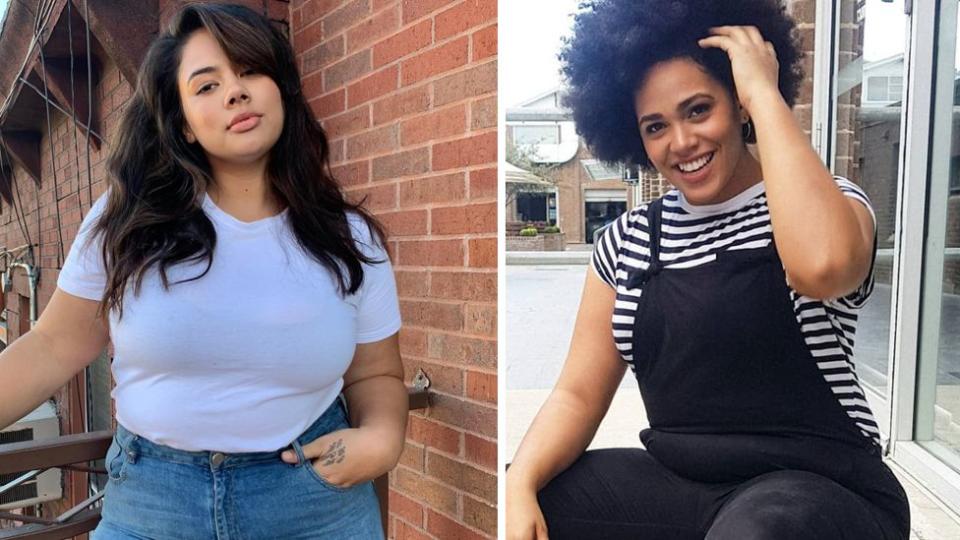
“It’s true that Australia has been slower to embrace all types of beauty, especially compared to the runways of New York or London,” says IMG’s Ragenard.
“But in casting this season of Mercedes Benz Fashion Week Australia, I do believe that’s changing. Sydney’s runways this season reflect a broader definition of beauty, and we’re seeing more mature and curvy models getting booked than ever before.”
It seems social media has played a great part in designers coming to grips with reality – not all Australians, including their customers, are actually stick thin and white.
“As designers connect with their consumers more directly through social media, they’re experiencing a two-way dialogue, really for the first time,” explains Ragenard.
“I believe this increased dialogue is a major reason that Aussie designers are casting diverse models – to more accurately reflect the customers they serve, and to invite them into their creative vision.”
In a bid to embrace body positivity, this year swim label Aqua Blu featured plus-size model Robyn Lawley as well as La'Tecia Thomas in its MBFWA show.
After appearing on the runway, La’Tecia told social media followers she was stoked “to be the first fullest woman to walk an Australian fashion show”.
“I cried each day, for a couple of days leading up to this moment. Why? Because this was less about me and more about US, meaning the average sized woman (size 14-16) in AUSTRALIA,” she wrote on Instagram.
“To be the first fullest woman to walk an Australian fashion show has me on cloud 9 and I have @aquabluaustralia to thank! There were several designers showing this week at #MBFW that went up to a size 16 and only @kristianchase_included size diversity.
“We need the rest of the Australian fashion industry take some notes. Whether the fashion industry wants to accept/ admit it, we are NOT invisible and fashion is for EVERYbody (sic).”

Shine 4 Diversity’s Mahalia says this is only the beginning and consistency is the key.
“They need to have a few champions in the plus size industry so they’re always here for fashion week so it brings more of it,” she explains.
“We do have people like Robyn Lawley but Robyn’s also six foot and looks nothing like me so there needs to be a range of people.”
This year’s big-name international guest sitting front row at MBFWA’s closing show was Somali-American model Halima Aden.
At the age of 21 she made headlines earlier this month after becoming the first to pose for Sports Illustrated’s swimsuit edition in a hijab and burkini.
The rising star describes her Sports Illustrated shoot as “life coming full circle” after she launched her modelling career by wearing a hijab and burkini at the 2016 Miss Minnesota USA pageant.

Meanwhile representation of Muslim women in the Australian fashion industry is still rare. In March, Hanan Ibrahim pushed boundaries when she became the Melbourne Fashion Festival’s first ever hijab-wearing model.
“The one thing I always loved about the designers we worked with, was they didn’t pick me just because I wore the hijab, they truly picked me because they wanted me on the runway show or they wanted to be inclusive,” Halima tells Yahoo Lifestyle Australia.
The trailblazing model does have a suggestion for local designers in terms of representation on the runway.
“I’m always encouraging people to really take a look at the Australian community for example, and see the people who make up that community, and try your best to incorporate the people, your customers, in your shows and in your campaigns.”
So will diversity ultimately become fashionable at Australian fashion week?
As model Alice Yang puts it, “Australia’s fashion industry has already put a big foot forward, however there is still room to completely up the ante!”
Got a story tip? Send it to lifestyle.tips@verizonmedia.com
Want more lifestyle and celebrity news? Follow Yahoo Lifestyle on Facebook, Twitter and Instagram.
Or sign up to our daily newsletterhere.

 Yahoo Lifestyle
Yahoo Lifestyle 

